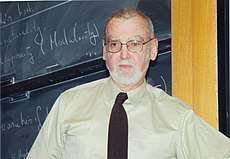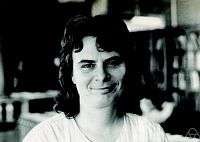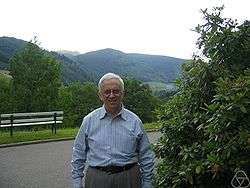Abel Prize
The Abel Prize /ˈɑːbəl/ (Norwegian: Abelprisen) is a Norwegian prize awarded annually by the King of Norway to one or more outstanding mathematicians.[1] It is named after Norwegian mathematician Niels Henrik Abel (1802–1829) and directly modeled after the Nobel Prizes.[2][3][4][5][6][7][8] It comes with a monetary award of 7.5 million Norwegian Kroner (NOK), award prize money enhanced from 6 million NOK to 7.5 million NOK in 2019.
| Abel Prize | |
|---|---|
 | |
| Awarded for | Outstanding scientific work in the field of mathematics |
| Country | Norway |
| Presented by | Government of Norway |
| First awarded | 2003 |
| Website | www.abelprize.no |
The Abel Prize's history dates back to 1899, when its establishment was proposed by the Norwegian mathematician Sophus Lie when he learned that Alfred Nobel's plans for annual prizes would not include a prize in mathematics. In 1902, King Oscar II of Sweden and Norway indicated his willingness to finance a mathematics prize to complement the Nobel Prizes, but the establishment of the prize was prevented by the dissolution of the union between Norway and Sweden in 1905. It took almost a century before the prize was finally established by the Government of Norway in 2001, and it was specifically intended "to give the mathematicians their own equivalent of a Nobel Prize."[7] The laureates are selected by the Abel Committee, the members of which are appointed by the Norwegian Academy of Science and Letters.
The award ceremony takes place in the Aula of the University of Oslo, where the Nobel Peace Prize was awarded between 1947 and 1989.[9] The Abel Prize board has also established an Abel symposium, administered by the Norwegian Mathematical Society, which takes place twice a year.[10]
The Bernt Michael Holmboe Memorial Prize was created in 2005. Named after Abel's teacher, it promotes excellence in teaching.[11]
History
The prize was first proposed in 1899, to be part of the celebration of the 100th anniversary of Niels Henrik Abel's birth in 1802.[12] The Norwegian mathematician Sophus Lie proposed establishing an Abel Prize when he learned that Alfred Nobel's plans for annual prizes would not include a prize in mathematics. King Oscar II was willing to finance a mathematics prize in 1902, and the mathematicians Ludwig Sylow and Carl Størmer drew up statutes and rules for the proposed prize. However, Lie's influence waned after his death, and the dissolution of the union between Sweden and Norway in 1905 ended the first attempt to create an Abel Prize.[12]
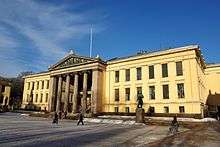
After interest in the concept of the prize had risen in 2001, a working group was formed to develop a proposal, which was presented to the Prime Minister of Norway in May. In August 2001, the Norwegian government announced that the prize would be awarded beginning in 2002, the two-hundredth anniversary of Abel's birth. Atle Selberg received an honorary Abel Prize in 2002, but the first actual Abel Prize was awarded in 2003.[12][13]
A book series presenting Abel Prize laureates and their research was commenced in 2010. The first three volumes cover the years 2003–2007, 2008–2012, and 2013-2017 respectively.[14][15][16]
In 2019 Karen Uhlenbeck became the first woman to win the Abel Prize, with the award committee citing "the fundamental impact of her work on analysis, geometry and mathematical physics.[17]
Selection criteria and funding
Anyone may submit a nomination for the Abel Prize, although self-nominations are not permitted. The nominee must be alive. If the awardee dies after being declared the winner, the prize will be awarded posthumously.
The Norwegian Academy of Science and Letters declares the winner of the Abel Prize each March after recommendation by the Abel Committee, which consists of five leading mathematicians. Both Norwegians and non-Norwegians may serve on the Committee. They are elected by the Norwegian Academy of Science and Letters and nominated by the International Mathematical Union and the European Mathematical Society.[12][18] The committee as of 2019 chaired by Norwegian mathematician Hans Munthe-Kaas (University of Bergen),[19] and was before that, headed by Professor John Rognes.[20]
Funding
The Norwegian Government gave the prize an initial funding of NOK 200 million (about €21.7 million[21]) in 2001. Previously, the funding came from the Abel foundation, but today the prize is financed directly through the national budget.
The funding is controlled by the Board, which consists of members elected by the Norwegian Academy of Science and Letters.[18] The current leader of the Board is John Grue.
Laureates
See also
- List of prizes known as the Nobel of a field
- List of mathematics awards
References
- "Statutter for Niels Henrik Abels matematikkpris" (in Norwegian).
- "Robert P. Langlands Is Awarded the Abel Prize, a Top Math Honor".
- Dreifus, Claudia (29 March 2005). "From Budapest to Los Alamos, a Life in Mathematics". The New York Times.
- Cipra, Barry A. (26 March 2009). "Russian Mathematician Wins Abel Prize". ScienceNOW. Archived from the original on 29 March 2009. Retrieved 29 March 2009.
- "Geometer wins maths 'Nobel'". Nature. 26 March 2009. Retrieved 17 October 2012.
- Foderaro, Lisa W. (31 May 2009). "In N.Y.U.'s Tally of Abel Prizes for Mathematics, Gromov Makes Three". The New York Times. Retrieved 17 October 2012.
- Devlin, Keith (April 2004). "Abel Prize Awarded: The Mathematicians' Nobel". Mathematical Association of America. Archived from the original on 27 August 2012. Retrieved 4 November 2012.
- Piergiorgio Odifreddi; Arturo Sangalli (2006). The Mathematical Century: The 30 Greatest Problems of the Last 100 Years. Princeton University Press. p. 6. ISBN 0-691-12805-7.
- "University of Oslo". Oslo Opera House. Retrieved 22 December 2012.
- "Main Page". The Norwegian Academy of Science and Letters. Retrieved 26 July 2012.
- "Abel Prize | mathematics award". Encyclopedia Britannica.
- "The History of the Abel Prize". The Norwegian Academy of Science and Letters. Retrieved 26 July 2012.
- O'Connor, John J.; Robertson, Edmund F., "Atle Selberg", MacTutor History of Mathematics archive, University of St Andrews.
- H. Holden; R. Piene, eds. (2010). The Abel Prize 2003–2007. The Abel Prize. Heidelberg: Springer. doi:10.1007/978-3-642-01373-7. ISBN 978-3-642-01372-0.
- H. Holden; R. Piene, eds. (2014). The Abel Prize 2008–2012. The Abel Prize. Heidelberg: Springer. doi:10.1007/978-3-642-39449-2. ISBN 978-3-642-39449-2.
- H. Holden; R. Piene, eds. (2019). The Abel Prize 2013-2017. The Abel Prize. Heidelberg: Springer. doi:10.1007/978-3-319-99028-6. ISBN 978-3-319-99027-9.
- Change, Kenneth (19 March 2019). "Karen Uhlenbeck Is First Woman to Receive Abel Prize in Mathematics". The New York Times. Retrieved 19 March 2019.
- "Nomination Guidelines". The Norwegian Academy of Science and Letters. Retrieved 26 July 2012.
- "The Abel Committee 2018/2019". www.abelprize.no. Retrieved 19 September 2018.
- "The Abel Committee 2015/2016". Retrieved 4 January 2016.
- "Google Currency Converter". Retrieved 27 March 2017.
- "The Abel Prize Laureate 2003". The Norwegian Academy of Science and Letters. Retrieved 23 December 2012.
- "The Abel Prize Laureate 2004". The Norwegian Academy of Science and Letters. Retrieved 23 December 2012.
- "Peter Lax | Simons Foundation". Simons Foundation. Retrieved 12 November 2015.
- "The Abel Prize Laureate 2005". The Norwegian Academy of Science and Letters. Retrieved 23 December 2012.
- "Swedish mathematician receives the Abel Prize". The Norwegian Academy of Science and Letters. Retrieved 23 December 2012.
- "The Abel Prize Laureate 2006". The Norwegian Academy of Science and Letters. Retrieved 23 December 2012.
- "Fields Institute – Thematic Program on Dynamic and Transport in Disordered Systems". Fields Institute for Research in Mathematical Sciences. Retrieved 23 December 2012.
- "The Abel Prize Laureate 2007". The Norwegian Academy of Science and Letters. Retrieved 23 December 2012.
- "The Abel Prize Laureate 2008". The Norwegian Academy of Science and Letters. Retrieved 23 December 2012.
- "Abel Prize Ceremony 2008". The Royal Norwegian Embassy in Seoul. Retrieved 23 December 2012.
- "Russian-French mathematician receives the Abel Prize". The Norwegian Academy of Science and Letters. Archived from the original on 15 June 2013. Retrieved 23 December 2012.
- "The Abel Committee's Citation 2009". The Norwegian Academy of Science and Letters. Retrieved 9 August 2016.
- Foderaro, Lisa W. (31 May 2009). "In N.Y.U.'s Tally of Abel Prizes for Mathematics, Gromov Makes Three". The New York Times. Retrieved 17 October 2012.
- "The Abel Prize Laureate 2009". The Norwegian Academy of Science and Letters. Retrieved 9 August 2016.
- "The Abel Prize Laureate 2010". The Norwegian Academy of Science and Letters. Retrieved 23 December 2012.
- "Dimension-Cruncher: Exotic Spheres Earn Mathematician John Milnor an Abel Prize". Scientific American. Retrieved 23 December 2012.
- "The Abel Prize Laureate 2011". The Norwegian Academy of Science and Letters. Retrieved 23 December 2012.
- "Hungarian-American Endre Szemerédi named Abel Prize winner". The Norwegian Academy of Science and Letters. Retrieved 23 December 2012.
- "The Abel Prize Laureate 2012". The Norwegian Academy of Science and Letters. Retrieved 23 December 2012.
- "The Abel Prize Laureate 2013". The Norwegian Academy of Science and Letters. Retrieved 20 June 2013.
- "The Abel Committee's Citation 2014". The Norwegian Academy of Science and Letters. Retrieved 9 August 2016.
- "The Abel Prize Laureate 2014". The Norwegian Academy of Science and Letters. Retrieved 26 March 2014.
- "The Abel Prize Laureates 2015". The Norwegian Academy of Science and Letters. Retrieved 9 August 2016.
- "The Abel Committee's Citation 2016". The Norwegian Academy of Science and Letters. Retrieved 9 August 2016.
- "Sir Andrew J. Wiles receives the Abel Prize" (Press release). The Norwegian Academy of Science and Letters. Retrieved 9 August 2016.
- "The Abel Prize Laureate 2016". The Norwegian Academy of Science and Letters. Retrieved 15 March 2016.
- "The Abel Prize Laureate 2017". The Norwegian Academy of Science and Letters. Retrieved 21 March 2017.
- http://www.nasonline.org, National Academy of Sciences -. "Robert Langlands". www.nasonline.org.
- "The Abel Prize Laureate 2018". The Norwegian Academy of Science and Letters. Retrieved 20 March 2018.
- http://www.nasonline.org, National Academy of Sciences -. "Karen Uhlenbeck". www.nasonline.org.
- "Karen Uhlenbeck first woman to win the Abel Prize". The Norwegian Academy of Science and Letters. Retrieved 19 March 2019.
- Chang, Kenneth (19 March 2019). "Karen Uhlenbeck Is First Woman to Receive Abel Prize in Mathematics - Dr. Uhlenbeck helped pioneer geometric analysis, developing techniques now commonly used by many mathematicians". The New York Times. Retrieved 19 March 2019.
- "The Abel Prize Laureates 2020". The Norwegian Academy of Science and Letters. Retrieved 18 March 2020.
External links
| Wikimedia Commons has media related to Abel Prize. |
- Official website

- Official website of the Abel Symposium
- Barile, Margherita and Weisstein, Eric W. "Abel Prize". MathWorld.CS1 maint: multiple names: authors list (link)
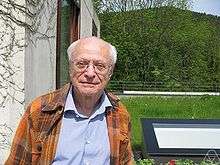

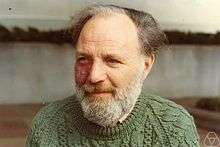
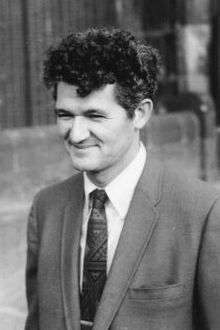
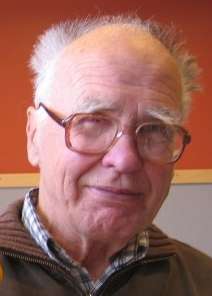
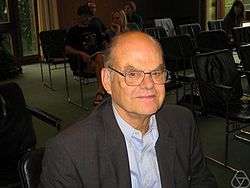
.jpg)
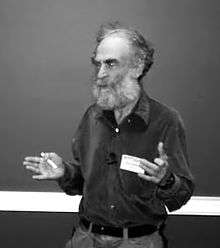
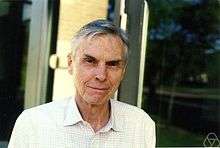
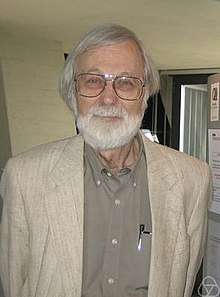
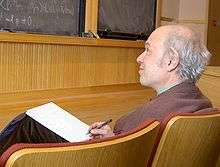
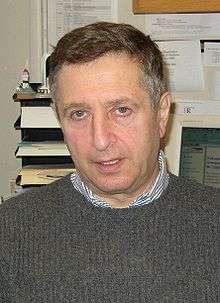
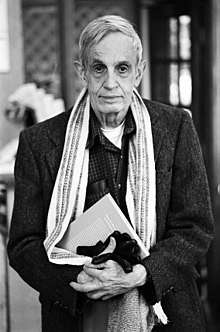
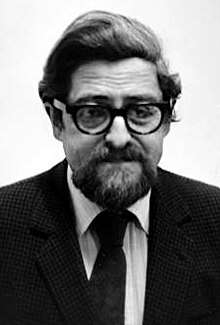

_-_Philippe_Binant_Archives.jpg)
